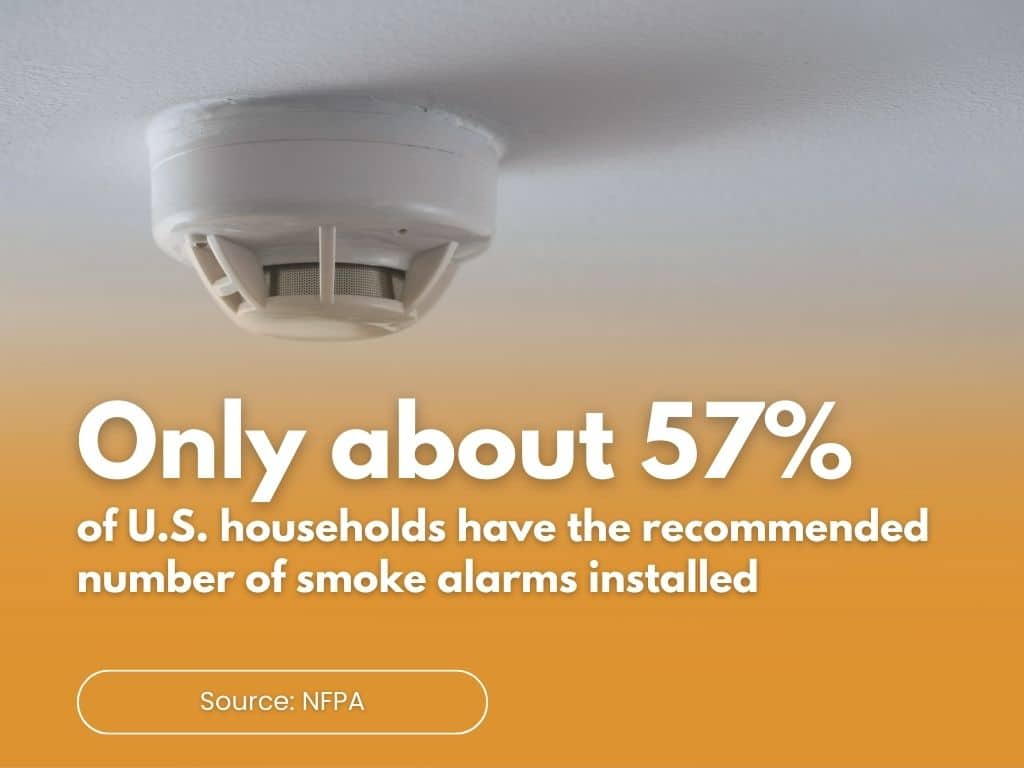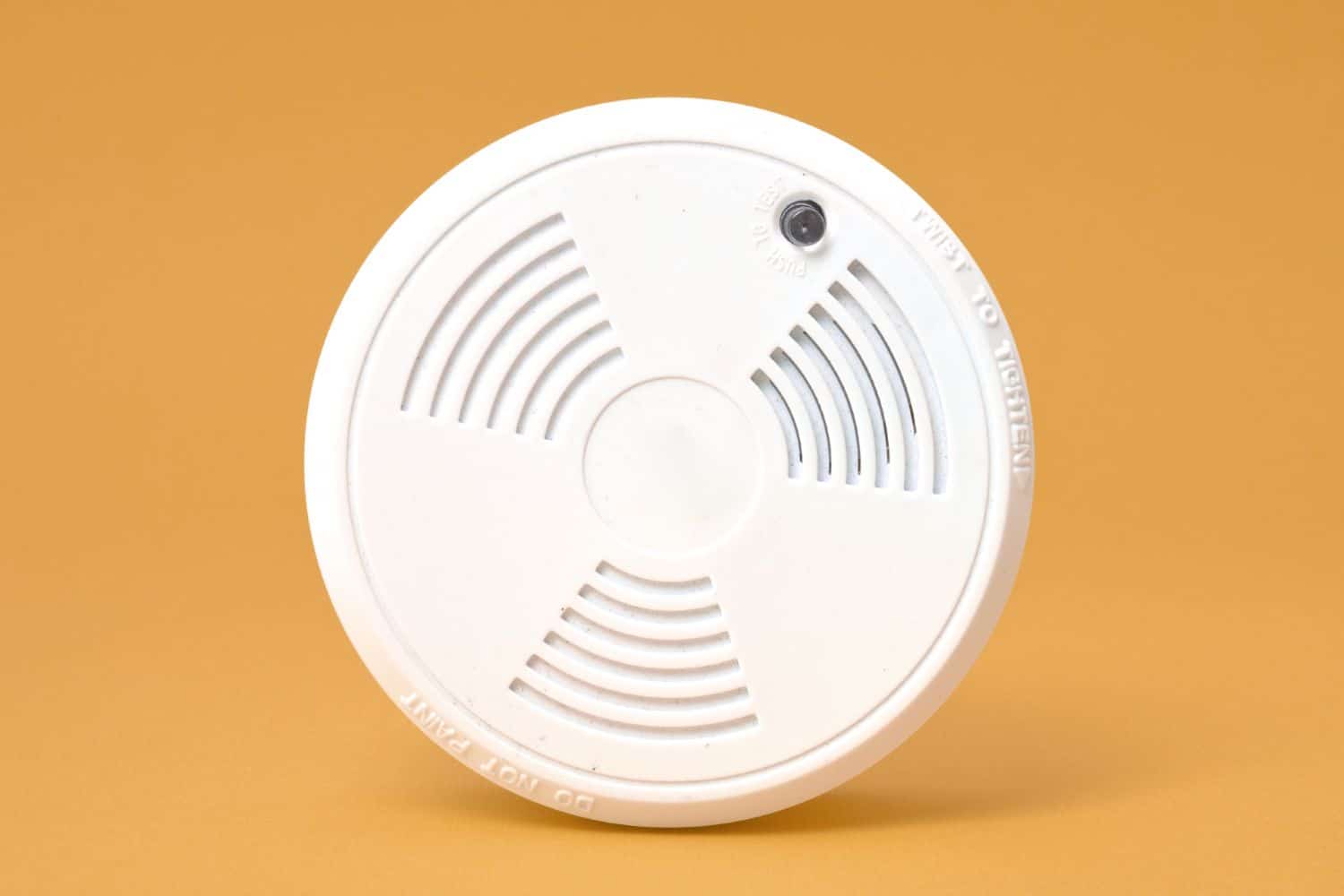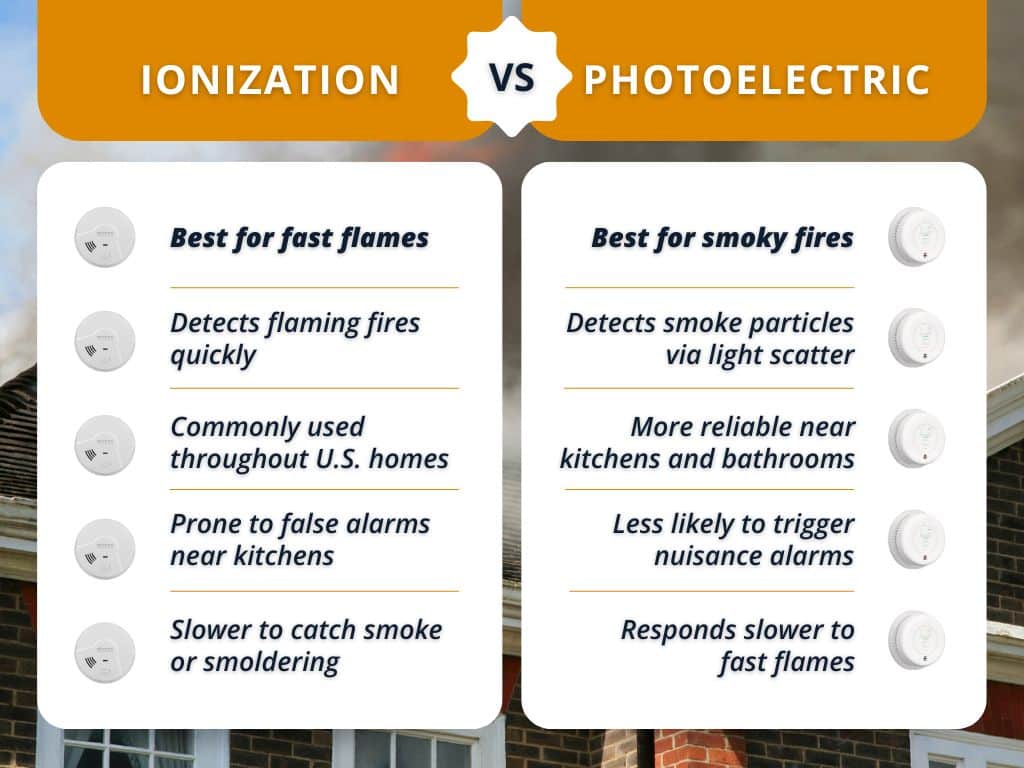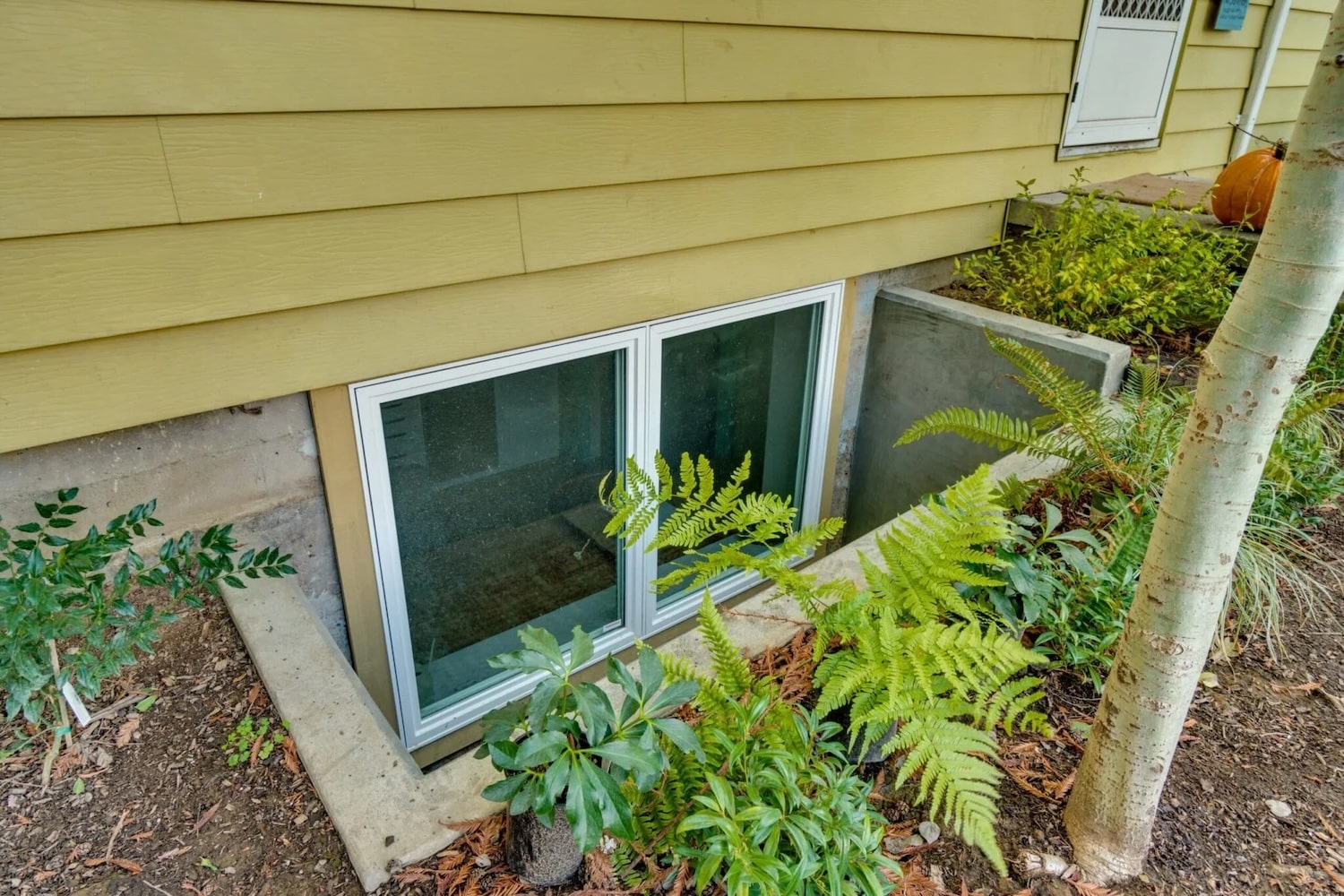This guide breaks down ionization vs photoelectric smoke alarms so you know how each type of alarm works, where it should be placed, what the limits are, and why many experts recommend using both.
When it comes to home safety, smoke alarms are one of the most overlooked yet most important devices you can install. Many homeowners assume all smoke alarms work the same way, but that is not true.
How Smoke Alarms Work
Smoke alarms are designed to sense fire in its early stages and give you enough warning to escape. Every alarm has two basic components: a sensor that detects smoke and an alarm that alerts you with a loud sound. The difference lies in how the sensor picks up on smoke particles.
-
Ionization alarms use a small amount of radioactive material to detect fast-moving, flaming fires.
-
Photoelectric alarms use light and a sensor to detect slower, smoldering fires.
Each technology responds to fire differently, which means knowing the details could save lives.
What Is an Ionization Smoke Alarm?
Ionization alarms are the most common type found in American homes. Inside the unit is a small chamber with two metal plates. A tiny bit of radioactive material, typically americium-241, releases ions that create a small electrical current between the plates.
When smoke enters this chamber, it disrupts the flow of ions and reduces the current. The alarm senses this change and sounds the alert.
Best for: Fast-moving, flaming fires such as kitchen grease fires, paper ignitions, or fires caused by flammable liquids.
Limitations: Ionization alarms are slower to react to smoldering fires. They are also prone to nuisance alarms when placed too close to kitchens or bathrooms, where steam or small amounts of smoke can trigger them unnecessarily.
What Is a Photoelectric Smoke Alarm?
Photoelectric alarms work differently. Inside the alarm is a light source and a sensor set at an angle. Normally, the light does not hit the sensor. When smoke enters the chamber, it scatters the light beam, redirecting it toward the sensor. Once the sensor detects the scattered light, the alarm goes off.
Best for: Smoldering fires that produce more smoke than flames. Common examples include fires started by a cigarette left on a couch, wiring that overheats behind a wall, or embers that ignite upholstery.
Limitations: Photoelectric alarms are slower to detect fast-moving, flaming fires. They may also be more expensive than ionization alarms, although the price gap has narrowed in recent years.
Key Differences at a Glance
To put the two side by side, here is what sets them apart:
-
Detection speed:
-
Ionization alarms respond faster to open flames.
-
Photoelectric alarms respond faster to smoke-heavy, smoldering fires.
-
-
Common causes detected:
-
Ionization: kitchen fires, paper ignitions, fuel fires.
-
Photoelectric: electrical malfunctions, upholstery ignitions, overheated cords.
-
-
False alarm risk:
-
Ionization units are more prone to nuisance alarms from cooking and steam.
-
Photoelectric units are less sensitive to minor smoke or steam.
-
-
Price and availability:
-
Ionization alarms are usually cheaper and more common in hardware stores.
-
Photoelectric alarms can cost slightly more but are becoming standard.
-
Why Experts Recommend Both
The truth is, no single alarm type is enough. Fires start in different ways and can spread quickly. If your home only has ionization alarms, you might miss the early stages of a smoldering fire in a bedroom or basement. If you only rely on photoelectric alarms, you could lose precious minutes in the event of a kitchen grease fire.
For this reason, many fire safety experts and organizations such as the National Fire Protection Association (NFPA) recommend installing both types of alarms in your home. Some manufacturers even sell combination units that use both ionization and photoelectric sensors in a single device.
Placement Matters as Much as Type
Even the best smoke alarm will not help if it is installed in the wrong place. Follow these guidelines for maximum safety:
-
Install alarms on every level of the home, including the basement.
-
Place alarms inside each bedroom and outside every sleeping area.
-
Mount alarms high on walls or ceilings since smoke rises.
-
Keep alarms away from windows, vents, or fans where airflow may interfere with detection.
-
In kitchens, position alarms at least 10 feet away from stoves or ovens to cut down on nuisance alarms.
Checking your local building codes or inspection requirements can also ensure compliance with current safety standards.
Maintenance Tips for Your Smoke Alarms
Installing the right type of alarm is only the first step. Regular upkeep is what keeps them reliable, so here’s what you need to know to maintain ionization vs photoelectric smoke alarms:
-
Test alarms monthly by pressing the test button until the sound activates
-
Replace batteries annually unless you have a sealed 10-year battery model
-
Vacuum the alarm face every few months to clear dust and cobwebs (especially important for ionization models near kitchens, which are more prone to false alarms)
-
Replace units every 8 to 10 years, even if they still work, since sensor sensitivity fades over time
-
Check dual-sensor or combination alarms more frequently if they’re your only coverage
Too often, alarms fail simply because they were neglected. Staying consistent with testing and replacement can make the difference between early warning and real danger.

When to Call a Professional
Even though smoke alarms are often thought of as simple devices, there are times when calling a professional is the safest choice.
-
Buying or selling a home: A professional inspection can confirm whether alarms are installed correctly, located in the right places, and still within their effective lifespan. This is particularly important for buyers who want to be sure their new home is safe and for sellers who want to avoid inspection report delays.
-
Unsure about wiring or hardwired alarms: If you have alarms connected directly to your electrical system, an inspector can verify proper wiring and backup battery function.
-
Older homes with outdated devices: A professional can point out alarms that need to be replaced and recommend updated models that meet today’s standards.
-
After frequent nuisance alarms: If your alarms keep going off without cause, an inspector can determine whether the wrong type of alarm was installed in that area or if a more serious wiring issue is at play.
Calling in a professional is not just about convenience. It ensures your system is up to code, reliable, and truly ready to protect your family.
Related Questions and Answers
How often should you replace smoke alarms?
Most alarms need to be replaced every 8 to 10 years. Even if they still sound during testing, the sensors lose sensitivity over time.
Do inspectors check smoke alarms during a home inspection?
Yes. A general home inspection typically includes a check for the presence and basic functionality of smoke alarms, especially in required locations. However, it does not involve lab testing or code certification unless noted.
What other safety issues might go unnoticed without an inspection?
Improper wiring, overloaded circuits, blocked vents, or missing GFCI outlets are common safety concerns that show up during home inspections. These can present fire or electrical hazards that homeowners might miss.
Are combination ionization and photoelectric alarms worth it?
Yes, dual-sensor alarms give you the broadest coverage in a single unit. They may cost a little more, but they are highly recommended by fire safety organizations.
Conclusion
It’s important to know that ionization vs photoelectric smoke alarms are not interchangeable. Each serves a different purpose, and relying on just one leaves gaps in protection. The safest approach is to use both types or to install dual-sensor units. Combine that with proper placement and regular maintenance, and your home will have a much stronger defense against fire.
When scheduling a home inspection, remember that smoke alarms are more than just a checkbox item. They are lifesaving tools that deserve careful attention. If you are unsure whether your alarms are up to standard, a professional inspection can give you clarity and help you take the right next steps.







